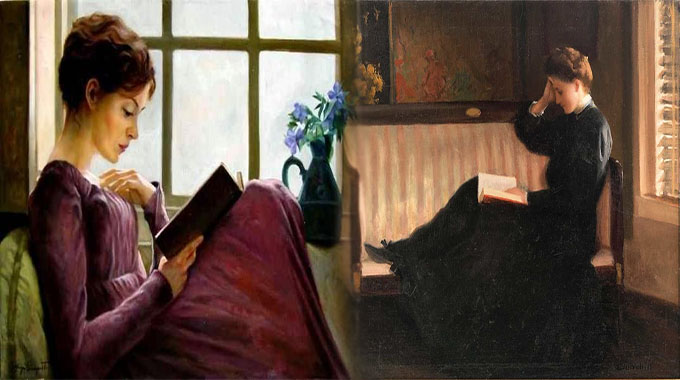Women reading in art is something that can be found in many of the most famous works of art. The list of women reading in art is endless and includes artists such as Mary Cassatt, Christine de Pizan, and Pieter Janssens Elinga. But there are many others who are not quite as well known, but who are also very important and who have had a tremendous impact on the development of art. This article will discuss a few of them.
Edouard Manet’s Woman Reading
Edouard Manet’s Woman Reading is an oil painting. It was produced in 1879 and is currently housed in the Art Institute of Chicago.
The painting was a harbinger of things to come for the artist. Despite suffering from a nervous disorder, Manet still managed to create a number of works of art. He changed his studio and his stance on society, and shifted his style from the bourgeois to the impressionist.
Manet was a founding member of the Impressionist movement, and his work influenced many of his contemporaries. Many of his paintings were bought for impressive sums of money. Some of his most notable contributions to the genre were landscapes, portraits of women, and still lifes.
While a man may be capable of creating a masterpiece, his wife, Suzanne, is his greatest muse. She appears in several of Manet’s most famous paintings, including The Lunch and The Bubbles of Soap. They worked hard to ensure that his legacy remained intact after his death.
Mary Cassatt’s Woman Reading
Mary Cassatt is a famous artist who was born in Allegheny City, Pennsylvania. She was a member of the Impressionists and is considered to be one of the most influential female artists in history.
The paintings and murals of Mary Cassatt are known for a combination of technical skill and psychological depth. Her artworks depicted the bond between mothers and children, as well as the daily lives of women in society.
At the age of 16, Mary Cassatt studied at the Pennsylvania Academy of the Fine Arts. After two years, she traveled to Paris to study under Jean-Leon Gerome. During her time in France, she learned about the works of Velazquez, Correggio, and Rubens.
When she arrived in Paris, she was introduced to the work of Edgar Degas, who encouraged her to become a member of the Impressionists. In addition to his support, Degas facilitated her interest in etching.
Magdalen Reading
In this painting, Mary Magdalen is reading a book. The red garment she is wearing is linked to the red garment in John the Apostle, an important biblical figure. Van der Weyden depicted the Magdalen reading a book as a model of devotional life. He used amber for the cushion that the Magdalen is sitting on. A pot of oil at her side is symbolic of the ointment that the Magdalen anointed Christ’s feet with when Jesus visited Bethany.
Using a large format oil on panel, Van der Weyden created a beautiful painting that portrays the Magdalen Reading. It is dated between 1435 and 1438. This painting is now part of the National Gallery of Art in London.
According to the National Gallery, the painting’s title, “The Magdalen Reading”, is inscribed on a ledge below the painting. The painting was originally part of a larger altarpiece.
Pieter Janssens Elinga’s Reading Woman
Pieter Janssens Elinga’s Reading Woman is not your typical Dutch Golden Age painting. This one is a little more than a decade old and was purchased by the Dutch royal family for a song, although you would probably be lucky to find a similar piece in a museum. The woman is sitting in a reading chair on a classically styled doorway. While there is no evidence that she is the author of a particularly famous novel, she is certainly in the company of the likes. She is certainly the lady o’ the night, but she’s not the only one to take a cue from the painter.
A woman in a yellow jacket is the obvious choice for the title of the painting’s central figure, but she’s not the only occupant. In this instance the aforementioned lady o’ the night is not the star of the show, and her handsome husband is not far behind in the limelight.
Christine de Pizan’s Reading the Story of Oenone
Christine de Pizan was born in Italy and moved to France at a young age. She studied poetry and history, but she did not pursue a career as a writer until she was fifteen. When she married Etienne de Castel, he became her patron.
De Pizan’s writings in the early fifteenth century were written for a variety of audiences. Her work reflects a growing concern about the irresponsible depiction of women in literature.
In her work, Christine creates a world in which wisdom is shaped by female deities. She reinterprets classical mythology to reflect her personal interests. These reinterpretations, which exemplify her feminist agenda, reflect her personal beliefs.
Christine de Pizan was considered the first professional female author of medieval Europe. Christine’s work addresses misogyny and sexism in the representation of women in classical literature and antiquity.












